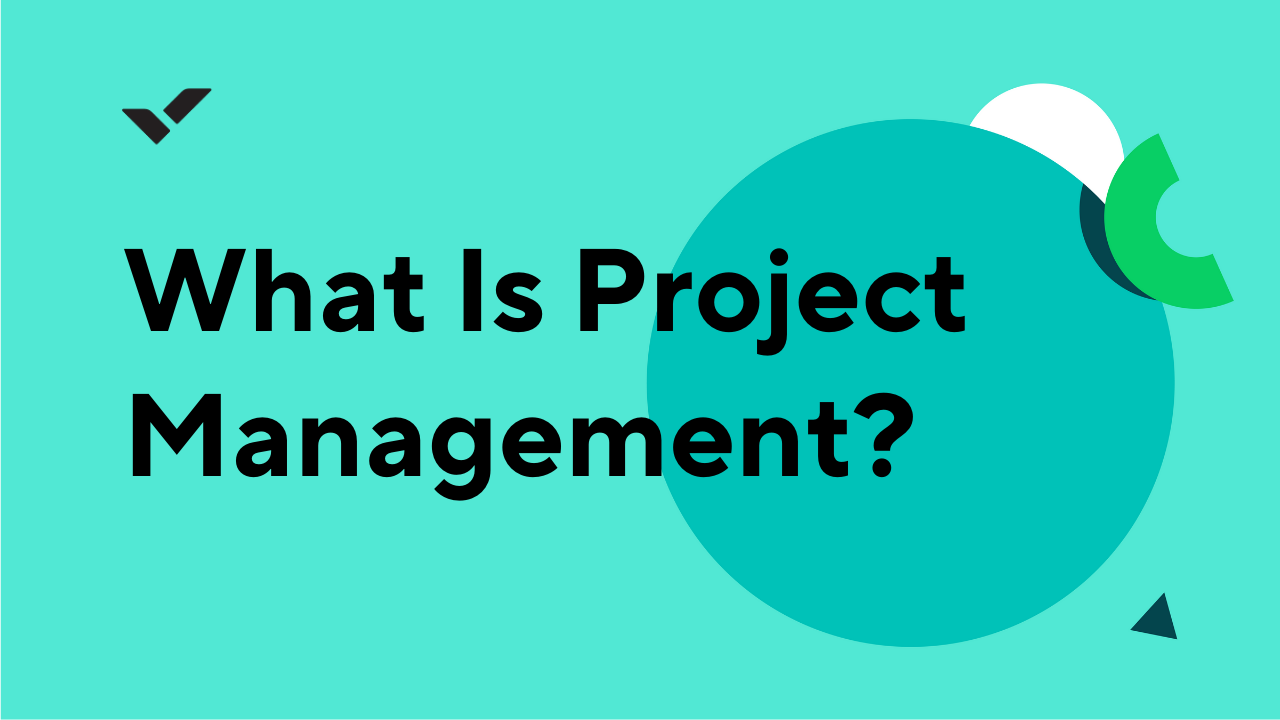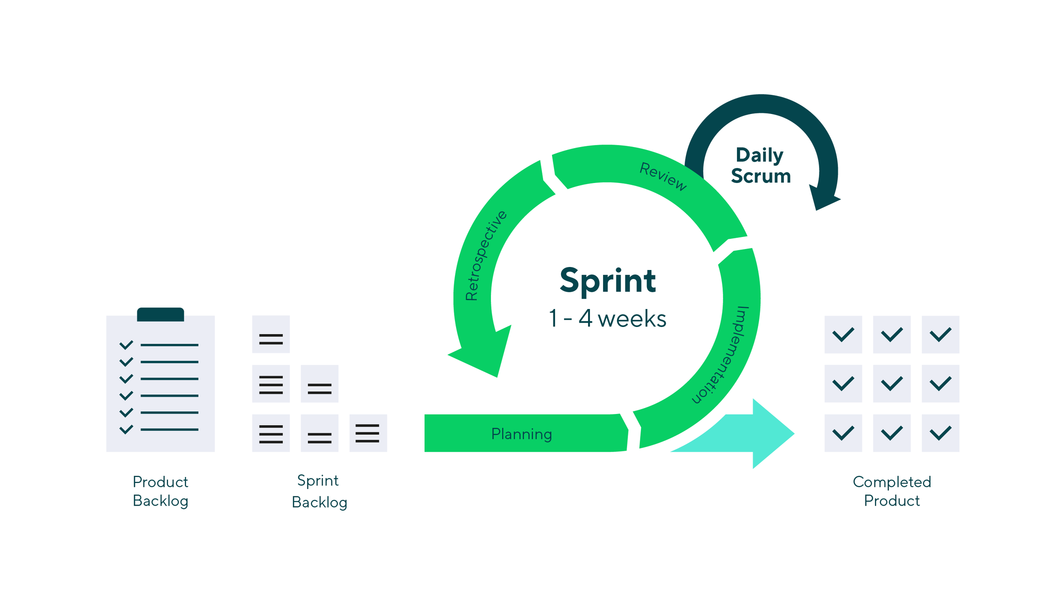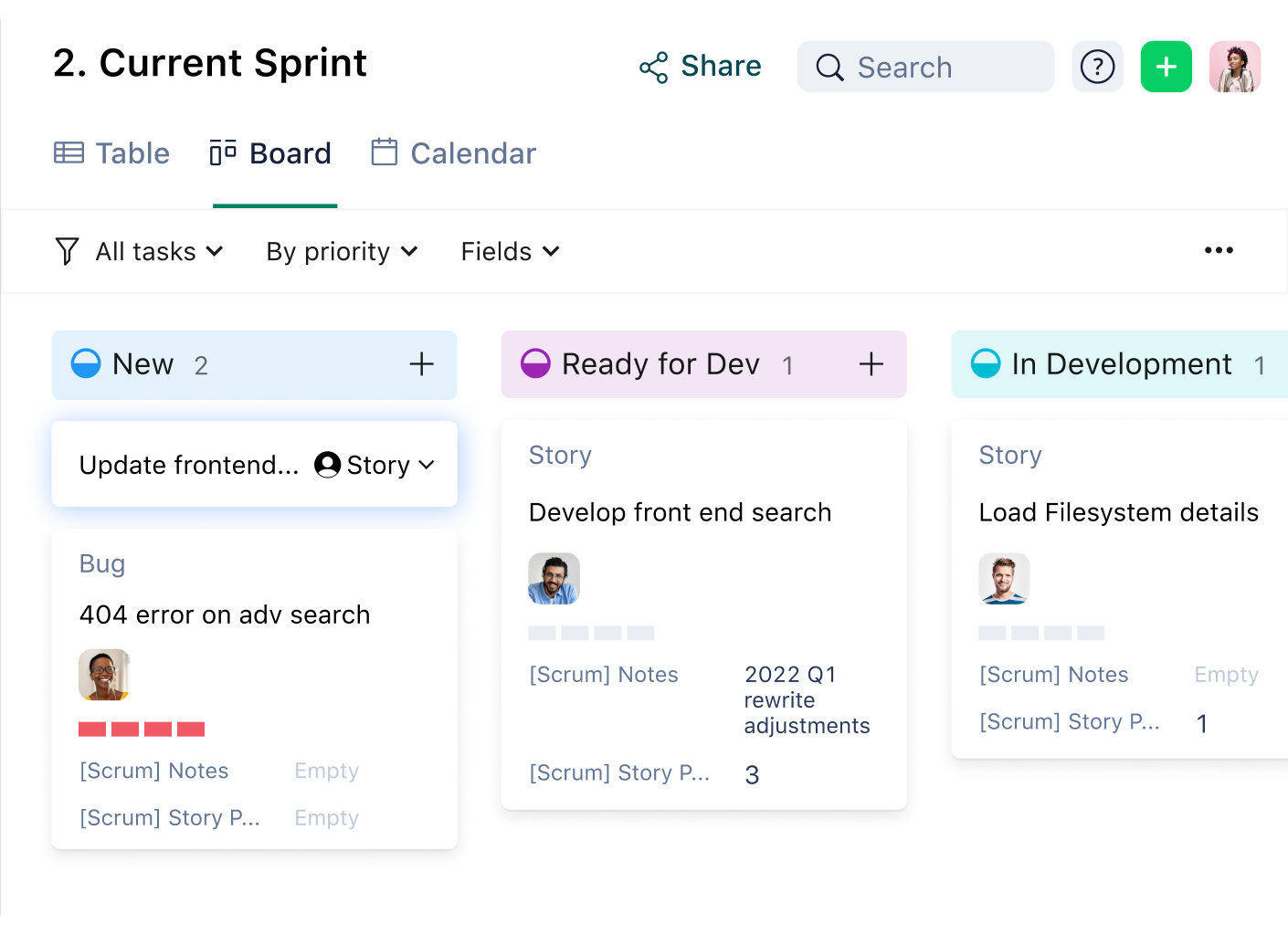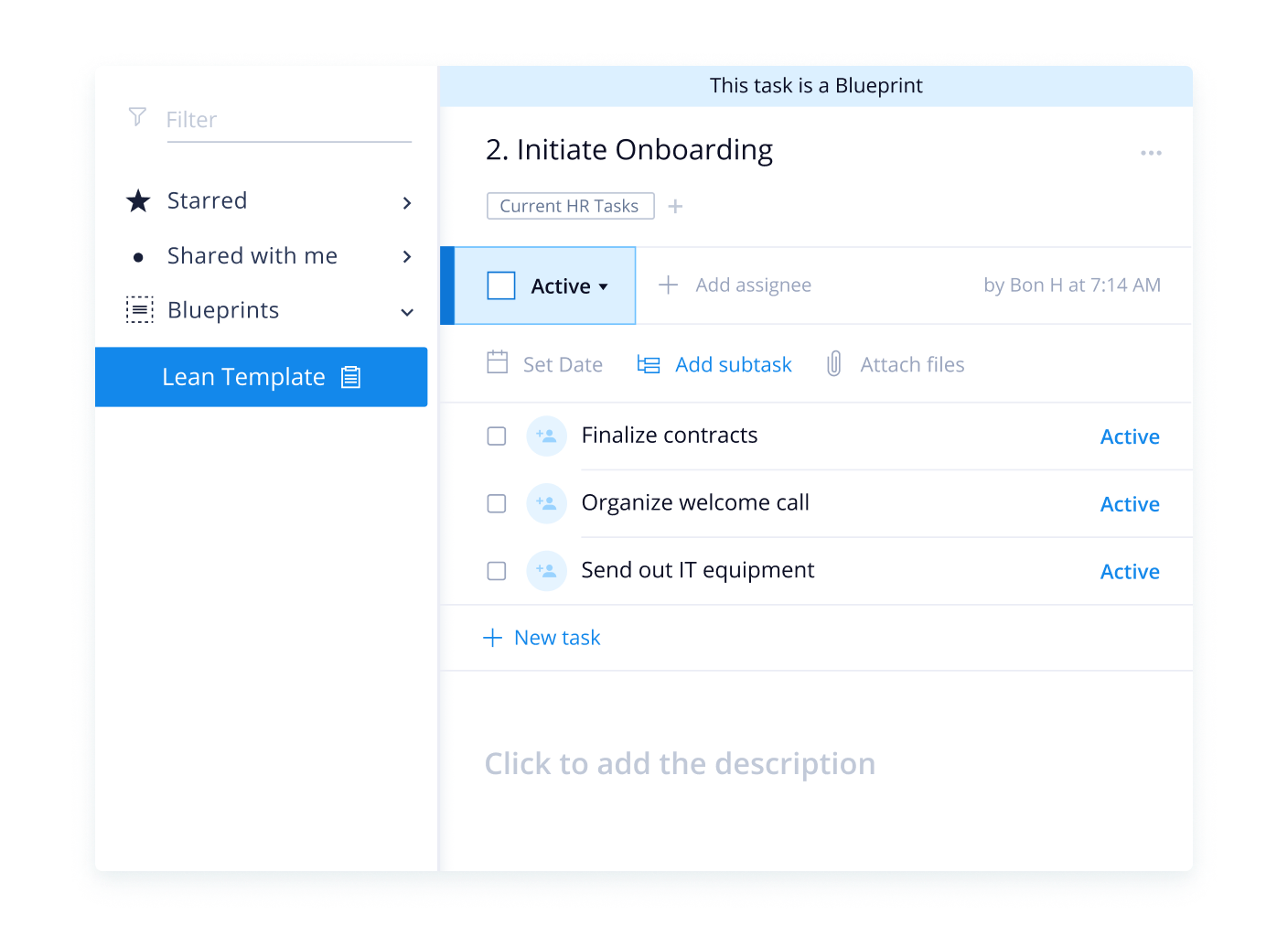The top project management methodologies
“You mean there’s more than one project management methodology?” There are quite a lot of them, actually, and some even combine to form new hybrid approaches. But what are they exactly? How do they help project teams work better? And what makes one methodology better than another?
Project management methodologies are essentially different ways to approach a project. Each one has a unique process and workflow.
Here, we look at some of the top project management methodologies, grouped by similarity and popularity.
Before we begin, you can unlock a free trial with Wrike right now to try out our powerful features, collaborate with colleagues in real time, and streamline all your projects in one platform.

A. The traditional, sequential methodologies
Waterfall project management methodology
The most common way to plan out a project is to sequence the tasks that lead to a final deliverable and work on them in order. This process is also known as the waterfall methodology — the traditional method for managing projects and the one that is simplest to understand. You have to complete one task before the next one begins in a connected sequence of items that add up to the overall deliverable. It’s an ideal method for projects that result in physical objects (buildings, computers), and you can easily replicate project plans for future use.
The power of this methodology is that every step is preplanned and laid out in the proper sequence. While this may be the simplest method to implement initially, any changes in stakeholders’ needs or priorities will disrupt the series of tasks, making it very difficult to manage. This methodology excels in predictability but lacks in flexibility.
Critical path method (CPM)
The critical path method was developed in the 1950s, based on the idea that there are some tasks you can’t start until you finish the previous one. When you string these dependent tasks together from start to finish, you plot out your critical path.
Identifying and focusing on this critical path allows project managers to prioritize and allocate resources to get the most important work done and reschedule any lower priority tasks that may be clogging up your team’s bandwidth. This way, if you need to make changes to the project schedule, you can optimize your team’s work process without delaying the results.
This way, if you need to make changes to the project schedule, you can optimize your team’s work process without delaying the results. A Gantt chart is one of the most common ways to visualize the critical path in project management.
Critical chain project management (CCPM)
Critical chain project management takes the critical path method one step further. CCPM is a methodology that focuses on the resources needed to complete the project’s tasks by adding resource availability to the critical path. It also builds buffers of time around these tasks in the project’s schedule, ensuring the project meets its deadlines.
B. The Agile family
Agile project management methodologies are growing in popularity, thanks to a highly competitive business environment and increased innovation. In general, Agile methodologies prioritize shorter, iterative cycles and flexibility.
Let’s take a look at some of the most popular Agile frameworks.
Agile project management methodology
The core of the Agile methodology was developed in 2001 with four central values:
- Individuals and interactions over processes and tools
- Working software over comprehensive documentation
- Customer collaboration over contract negotiation
- Responding to change over following a plan
The Agile Manifesto of Software Development put forth a groundbreaking mindset on delivering value and collaborating with customers. Today, Agile can refer to these values as well as the frameworks for implementing them, including Scrum, Kanban, extreme programming, and adaptive project framework.
What do these various Agile frameworks have in common?
Project objectives are made clear by the customer (internal or external), while the final deliverable can change as the project progresses. The project team works in iterative cycles, always evaluating results at the end. Depending on the results of these evaluations, the final deliverable may be modified to better answer the customer’s needs. Continuous collaboration is key, both within the project team and with project stakeholders.


Scrum
Scrum is the most popular Agile development framework because it is relatively simple to implement. It also solves many problems that software developers struggled with in the past, such as convoluted development cycles, inflexible project plans, and shifting production schedules.
In Scrum, a small team is led by a Scrum master whose main job is to clear away all obstacles to working efficiently. The team works in short cycles of two weeks called “sprints,” though the team members meet daily to discuss their work and any roadblocks that need clearing. This methodology allows for rapid development and testing, especially within small teams.


Kanban
Kanban is another framework for implementing Agile based on a team’s capacity. It originated in Toyota’s factories during the 1940s. The departments used a visual system of cards (“Kanban”) to signal that their team was ready for more raw materials and had more capacity to produce.
Today, this visual approach to managing a project is well-suited to work that requires steady output. Project teams create visual representations of their tasks, often using sticky notes and whiteboards (or online Kanban boards), moving the notes or tasks through predetermined stages to see progress as it happens and identify where roadblocks could occur.
Extreme Programming (XP)
Extreme programming (XP) is another offshoot of Agile. XP is a methodology designed to enhance software quality (and simplicity) and a development team’s ability to adapt to customers’ needs. Much like the original Agile formula, XP features short work sprints, frequent iterations, and constant collaboration with stakeholders. Change can happen within a sprint. If work hasn’t started on a specific feature, it can be swapped out and replaced by a similar task.
Adaptive Project Framework (APF)
Adaptive project framework grew from the difficulty in managing most IT projects using traditional project management methods due to uncertain and changing requirements.
APF begins with a requirements breakdown structure (RBS) to define strategic project goals based on product requirements, functions, sub-functions, and features. The project proceeds in iterative stages, and at the end of each step, teams evaluate previous results to improve performance and practices. Stakeholders can also change the project’s scope at the start of each stage so the team can produce the most business value.
C. The change management methodologies
Some methodologies deal with managing projects, but with an extra focus on change management — especially planning for risks and taking control of change when it happens. Notable methods include:
Event chain methodology (ECM)
The underlying idea behind event chain methodology is that potential risks often lie outside the project’s scope. It’s essential to prepare for these risks and plan your response since unexpected events will impact your project’s schedule, deliverables, and potentially its success.
Extreme Project Management (XPM)
Extreme project management (XPM) is the opposite of waterfall. It offers you a way to manage massive change and still move forward to project completion. In XPM, you can alter the project plan, budget, and even the final deliverable to fit changing needs, no matter how far along the project is. It’s a good option when managing projects with a short timeline of anywhere from a few weeks to mere days.
D. The process-based methodologies
Next, we have the project management methods that practically veer into business process management (BPM), where each approach focuses on work as a collection of processes. While project management purists may argue that these methods belong on a different list, we think these are still good ways to plan and execute a project.
Lean
Lean is a methodology focused on streamlining and cutting out waste. The first step is to create a work process breakdown to identify and eliminate bottlenecks and delays. The goal is to do more with less — to deliver value to the customer using less manpower, less money, and less time.


Six sigma
Six sigma is a statistics-based methodology seeking to improve the quality of a process by measuring the defects or bugs present and eliminating as many as possible. A process can attain a six sigma rating if 99.99966% of the final product — your project deliverable — is defect-free.
Lean six sigma
Combining the minimalist approach of lean (“no waste!”) and the quality improvement of six sigma (“zero defects!”), lean six sigma focuses on eliminating waste so that projects are more efficient, cost-effective, and truly answer customers’ needs.
Process-based project management
Process-based project management is a methodology aligning all project objectives with a company’s larger mission and corporate values. All project goals and tasks remain strategic and must roll up to the larger corporate objectives. The steps involved include defining the process, establishing metrics, measuring methods, adjusting goals when these prove unstable, planning improvements, and implementing them.
E. Other methodologies
PRINCE2
PRINCE2 stands for Projects In Controlled Environments. It’s a method for managing projects used by the UK government and characterized by a product-based planning approach. In PRINCE2, a structured project board is in charge of high-level activities such as setting the business justification and resource allocation. A project manager takes care of the lower level, day-to-day activities like scheduling. This methodology gives teams greater control of resources and the ability to mitigate risk effectively.
PRiSM
PRiSM stands for Projects Integrating Sustainable Methods and aims at managing change while incorporating environmental sustainability into its processes. The goal with PRiSM is to complete tasks while reducing a company’s negative environmental and social impact. It is, quite literally, green project management.
Benefits realization
From conception to execution to delivery and beyond, the benefits realization methodology focuses on whether your deliverables satisfy the benefits the customer expects, and not just whether you delivered it on time or within budget. This methodology ensures that you provide real value to customers and stakeholders.
F. The PMBOK “method”
While it may be debatable whether this is a true project management methodology, you will find organizations that say they use the project management body of knowledge (PMBOK) method for managing projects.
While not an official methodology, this system involves breaking down projects into the five process groups agreed upon by the Project Management Institute (PMI) and documented in the Guide to the Project Management Body of Knowledge (PMBOK). The five stages include:
- Initiating
- Planning
- Executing
- Controlling
- Closing
What’s inside the PMBOK guide
WThe PMBOK collects set processes, best practices, terminologies, and guidelines that the project management industry accepts as standards. You’ll find it documented in the book, A Guide to the Project Management Body of Knowledge (PMBOK Guide), compiled and overseen by the Project Management Institute (PMI).
The PMBOK Guide provides project managers with guidelines and best practices, defining everything from the project life cycle to project management strategies and concepts. The PMBOK Guide details the various project management processes that interact and overlap throughout a project’s life cycle.
The 10 project management knowledge areas of PMBOK
PMBOK officially recognizes 47 typical project management processes, organized into 10 knowledge areas:
- Project communication management: Processes that disseminate information among team members and external stakeholders, ensuring that data is exchanged continuously, and more importantly, understood by all concerned.
- Project cost management: Processes regarding budgets, funding, spending allocation, and timing. Cost management is dependent on activity estimates from time management.
- Project human resources management: Processes involving managing your project team, like sourcing, hiring, assigning roles, professional development, and fostering team spirit.
- Project integration management: Processes necessary to define, consolidate, and coordinate all the other processes and project management activities. These processes are vital in setting expectations and keeping communication lines open.
- Project procurement management: Processes for planning, budgeting, and purchasing resources — whether physical or informational — to complete work.
- Project quality management: Processes that define a project’s success or criteria for considering the task complete. The team manages quality at every stage of the project, from planning to continuous performance improvement.
- Project risk management: Processes involved with preparing for and managing unexpected risks.
- Project scope management: Processes managing the scope or parameters of a project. These processes ensure the range is well-defined and that all requirements remain within the limit.
- Project stakeholder management: Processes that identify who will be impacted by the project and manage relationships with them, including strategies for collaborating with stakeholders on project direction and execution.
- Project time management: Processes needed to ensure the project is completed before the specified deadline.
Empower your project management methodology with Wrike
In conclusion, choosing the right project management methodology can make a significant difference in the success of your project. Each methodology has its unique characteristics, advantages, and disadvantages, and selecting the appropriate one depends on various factors such as project size, complexity, and team expertise.
Wrike offers an extensive range of features that cater to different project methodology needs and objectives, from Agile to Waterfall. With customizable workflows, pre-built templates, time-saving automation, and a user-friendly interface, Wrike makes it easy to implement new methodologies from scratch.
Whether you run a small business or a large enterprise, Wrike can help you manage your tasks more efficiently and tick off your to-do list. Use Wrike to increase your team’s productivity and deliver projects on time, every time.
Next Steps
Choose the Right Project Management Methodology
How to choose the right project management methodology
How do you choose the right methodology for your project with so many different options available? You should pick based on the needs of your project and your team. Two tips are relevant here:
A. Start with the end in mind
Take a look at your requirements, project goals, and objectives. What does your final deliverable need to look like? What benefits should it provide? Here are some examples:
- If it’s a physical object, such as a building or a household product with very definite materials and stakeholder expectations, it may benefit from a sequential methodology such as waterfall or critical path.
- If it’s a software product or app that is not set in stone, a flexible Agile methodology may be just what the project needs.
- If environmental sustainability is a core value of your organization and essential to the delivery of your product, try PRiSM.
- Process-based methodologies such as lean or lean six sigma support the rapid development of a minimum viable product.
B. Assess what’s already working
Don’t forget to look at the processes you already have in place that have proven successful for your team. In what kind of work environment does your team excel?
- If they thrive on collaboration, incorporating new ideas as they work, and even last-minute pivots due to changing needs, consider methodologies such as Scrum, Kanban, XP, or APF.
- Or do they prefer an orderly, structured plan that accomplishes tasks sequentially? Then look at methodologies such as waterfall, critical path, and critical chain project management.
Now that you’ve been introduced to the various methodologies, the next step is to understand each phase of the project life cycle, so you can start planning your project from start to finish.
In the next section, we outline everything you need to know about the project life cycle.

Artem Gurnov
Artem is a Director of Account Development at Wrike. He previously held the role of Project Manager, overseeing a team of customer success managers (CSMs). Over the years of building teams and scaling business processes, he has successfully deployed multiple projects, from automating client outreach to setting up work prioritization tools for sales reps and CSMs.


